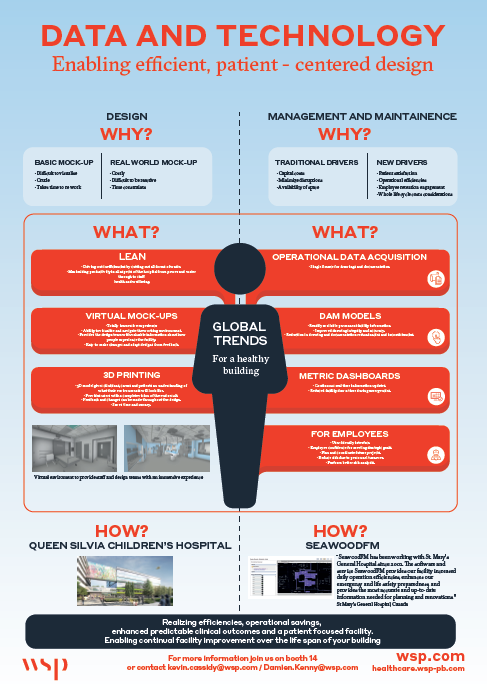Healthcare / Innovation
European Healthcare Design 2018
Using data and technology to enable efficient, patient-centred design
By Kevin Cassidy and Damien Kenny | 08 Jun 2018 | 0
Using case studies from recent international healthcare projects, this paper will look at design trends that put the patient and staff at the centre of the design process, and how these global trends can be applied to realise efficiencies, operational savings, and enhanced predictable clinical outcomes with measurable wellness benefits to staff and patients.
Abstract
Using data and technology to enable efficient, patient-centred design
Using case studies from recent international healthcare projects, this paper will look at design trends that put the patient and staff at the centre of the design process, and how these global trends can be applied to realise efficiencies, operational savings, and enhanced predictable clinical outcomes with measurable wellness benefits to staff and patients.
Objectives: These include:
- to learn about technologies employed globally to mock up renovation spaces and test room layouts using virtual reality, augmented reality, and improved physical mock-ups as a combination of user input and digital interfaces;
- to identify areas where data acquisition can be employed to increase operational efficiencies; and
- to review owner asset management trends, such as model-based asset cataloguing and cutting-edge touch screen-driven PID, can serve as record documents for facility operations staff.
Description: First and foremost, healthcare is about putting the needs of the patient first. As our society ages and the needs for specialised care become increasingly demanding, taking a patient-centred approach to healthcare facility design has become more important. Our facilities have also become more dependent on technology, providing infrastructure design challenges, but also offering opportunities to capture data, analyse performance, and implement improvements across all aspects of healthcare delivery.
We will look at design methodologies and technologies that have been employed in recent healthcare projects, including the US, Canada and the Middle East, and how they can be applied to the public health context. These case studies will place an emphasis on the technologies that were employed to ascertain the impact of design decisions on the patient experience, and the improved operational efficiencies for staff to focus more on the patient and less on the built environment.
We will discuss the opportunities to use these approaches in the public healthcare market, taking into account funding sources, procurement models, and the challenges of system standardisation.
Finally, we will review how capturing data in healthcare facilities can lead to continual improvement of healthcare delivery and building operations, and enhance patient outcomes and increased staff efficiency. The goal will focus on overall wellness of the facility, community, patients and staff through streamlined operations and more predictable events in the built environment.
Some examples of the design process innovations that will be discussed include:
- virtual facility mock-ups;
- real world facility mock-ups;
- utilising 3D printing to analyse room options;
- Lean and co-location design deliveries focused on early owner participation for realised operational directives and budget allocation;
- operational data acquisition, analysis and implementation;
- digital asset management models that can be accessed by daily facility and operations staff; and
- metric dashboards and long-term decision-making KPI tools for evolving operational savings.
Organisations involved


